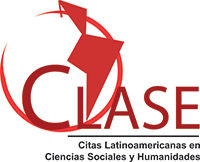Antigüedad y experiencia como factores clave de habilidades de gerencia de las Pymes para lograr competitividad empresarial
Seniority and experience as key factors in management skills for SMEs to achieve business competitiveness
##plugins.themes.bootstrap3.article.main##
Objetivo: evaluar la influencia de las habilidades gerenciales relacionadas a antigüedad y experiencia en la competitividad de pequeñas y medianas empresas de Hermosillo, México.
Metodología: Diseño mixto; una primera fase exploratoria mediante un panel de expertos usando el método Delphi para contextualizar y validar el instrumento. Después, se desarrolló una fase cuantitativa mediante encuestas a 108 empresas y un análisis de modelos de ecuaciones estructurales (PLS). Resultados: Las habilidades gerenciales evolucionan conforme a la experiencia de los gerentes. Durante los primeros años, estas habilidades se enfocan mayormente a la gestión de recursos humanos y financieros, y menos a habilidades de planeación y administración estratégica. Estas junto con la habilidad de globalización, se potencian en gerentes con más de diez años de experiencia. Conclusiones: Las habilidades gerenciales son un factor interno de las Pymes que influyen en la competitividad empresarial y evolucionan a la par de la experiencia de los gerentes.
Descargas
##plugins.themes.bootstrap3.article.details##
Alom, F., Abdullah, M. A., Moten, A. R., & Azam, S. F.(2016). Success factors of overall improvement of microenterprises in Malaysia: an empirical study. Journal of global entrepreneurship research, 6(1), 7-15. DOI: https://doi.org/10.1186/s40497-016- 0050-2
https://doi.org/10.1186/s40497-016-0050-2
Bagozzi, R.P. (1981). Evaluating structural equations models with unobservable variables and measurement error: A comment, Journal of Marketing Research, 18(3), 375-381. DOI: https:// doi.org/10.1177/002224378101800312
https://doi.org/10.1177/002224378101800312
Barclay, D.W., Higgins, C.A., y Thompson, R. (1995). The partial least squares approach to causal modeling: personal computer adoption and use as illustration, Technology Studies, 2(2), 285-309.
Chiavenato, I. (2014). Teoría general de la administración. México: Editorial Prentice hall.
Chin, W.W. (1998). The partial least squares approach for structural equation modeling. En Marcoulides, G.A. (Ed.). Modern methods for business research. London: Lawrence Erlbaum Associates.
Coque Martínez, J., Díaz Bretones, F., & López Mielgo, N. (2013). Factores para la puesta en marcha y el éxito de microempresas asociativas creadas por jóvenes egresados universitarios. REVESCO. Revista de Estudios Cooperativos, 112, 66-94.
https://doi.org/10.5209/rev_REVE.2013.v112.43063
Coronel de Renolfi, M.; Cardona, G. (2009). Tipificación de Pymes mediante técnicas de análisis multivariado, el caso de la ciudad de Santiago del Estero en Argentina. Revista Pymes Tec Empresarial, 3(1), 45-54.
Crissien, J. (2006). Espíritu empresarial como estrategia de competitividad y desarrollo económico. Revista Escuela de Administración de Negocios 57, 103-117.
https://doi.org/10.21158/01208160.n57.2006.376
Dijkstra, T.K., & Henseler, J. (2015). Consistent and Asymptotically Normal PLS Estimators for Linear Structural Equations, Computational Statistics & Data Analysis, 81(1), 10-23. DOI: https://doi. org/10.1016/j.csda.2014.07.008
https://doi.org/10.1016/j.csda.2014.07.008
Esposito, V.V., Trinchera L., & Amato S. (2010). PLS Path Modeling: From Foundations to Recent Developments and Open Issues for Model Assessment and Improvement. En: Esposito Vinzi V., Chin W., Henseler J., Wang H. (Eds.). Handbook of Partial Least Squares. Springer Handbooks of Computational Statistics. Springer, Berlin, Heidelberg.
Fabi, B., Raymond, L., & Lacoursière, R. (2007). HRM practice clusters in relation to size and performance: An empirical investigation in Canadian manufacturing SMEs. Journal of Small Business & Entrepreneurship, 20(1), 25-39. DOI: https://doi.or g/10.1080/08276331.2007.10593384
https://doi.org/10.1080/08276331.2007.10593384
Falk, R.F. & Miller, N.B. (1992). A Primer for Soft Modeling, The University of Akron Press: Akron.
Fornell, C., & Larcker, D.F. (1981). Evaluating structural equation models with unobservable variables and measurement error, Journal of Marketing Research, 18, (1), 39-50. https://doi. org/10.1177/002224378101800104
https://doi.org/10.1177/002224378101800104
Franco, M. A., & Urbano, D. (2010). El éxito de las pymes en Colombia: un estudio de casos en el sector salud. Estudios gerenciales, 26(114), 77-96. DOI: https:// doi.org/10.1016/S0123-5923(10)70103-0
https://doi.org/10.1016/S0123-5923(10)70103-0
Grueso, Merlin P.; González, W.; Quintero, J. C., & Rojas, E. E. (2013). Scanning del componente tecnológico y su relación con variables organizacionales y gerenciales: un estudio exploratorio, Revista Entramado, 9(2), 56-67.
Hair, J.F.Jr., Hult, G.T.M., Ringle, C.M., y Sarstedt, M. (2017). A Primer on Partial Least Squares Structural Equation Modeling (PLS-SEM). USA: SAGE Publications Inc.
Hair, J.F.Jr., Ringle, C.M., & Sarstedt, M. (2011). PLSSEM: Indeed a silver bullet, Journal of Marketing Theory and Practice, 19, 139-151. DOI: https://doi. org/10.2753/MTP1069-6679190202
https://doi.org/10.2753/MTP1069-6679190202
Hair, J.F.Jr., Ringle, C.M., Sarstedt, M., & Gudergan, S.P. (2018). Advanced Issues in Partial Least Squares Structural Equation Modeling. USA: SAGE Publications Inc.
Hair, J.F.Jr., Sarstedt, M., Matthews, L., & Ringle, C.M. (2016). Identifying and treating unobserved heterogeneity with FIMIX-PLS: Part I - Method, European Business Review, 2(1), 63-76.
https://doi.org/10.1108/EBR-09-2015-0094
Henseler, J., Dijkstra, T.K., Sarstedt, M., Ringle, C. M., Diamantopoulos, A., Straub, D. W., Ketchen, D.J., Hair, J.F., Hult, G.T.M., y Calantone, R.J. (2014). Common Beliefs and Reality about Partial Least Squares: Comments on Rönkkö & Evermann (2013), Organizational Research Methods, 17(2), 182-209.
https://doi.org/10.1177/1094428114526928
Henseler, J., Ringle, C.M., & Sarstedt, M. (2015). A new criterion for assessing discriminant validity in variance-based structural equation modeling, Journal of the Academy of Marketing Science, 43(1), 115-135. DOI: https://doi.org/10.1007/s11747- 014-0403-8
https://doi.org/10.1007/s11747-014-0403-8
Henseler, J., Ringle, C.M., & Sinkovics, R.R. (2009). The use of partial least squares path modeling in international marketing. En Sinkovics, R.R., y Ghauri P.N. (Ed.) New Challenges to International Marketing-Advances in International Marketing, Vol. 20. Emerald Group Publishing Limited, pp. 277-319.
https://doi.org/10.1108/S1474-7979(2009)0000020014
Hu, L.-T., y Bentler, P.M. (1998). Fit Indices in Covariance Structure Modeling: Sensitivity to Underparameterized Model Misspecification, Psychological Methods, 3(4), 424-453. DOI: https:// doi.org/10.1037/1082-989X.3.4.424
https://doi.org/10.1037//1082-989X.3.4.424
Jaramillo, J. L.; Escobedo, J. S.; Morales, J.; Ramos, J. G. (2012). Perfil emprendedor de los pequeños empresarios agropecuarios en el valle de puebla, México. Entramado, Administración, 8(1), 44-57.
Jasra, J., Hunjra, A. I., Rehman, A. U., Azam, R. I., & Khan, M. A. (2011). Determinants of business success of small and medium enterprises. International Journal of Business and Social Science, 2(20), 1-12.
Jiang, J.J., Klein, G., Wu, S.P.J., y Liang T.P. (2009). The relation of requirements uncertainty and stakeholder perception gaps to project management performance, Journal of Systems and Software, 82(5), 801-808. DOI: https://doi. org/10.1016/j.jss.2008.11.833
https://doi.org/10.1016/j.jss.2008.11.833
Johnson, M.D., Herrmann, A., & Huber, F. (2006). The evolution of loyalty intentions, Journal of Marketing, 70(2), 122-132.
https://doi.org/10.1509/jmkg.70.2.122
Koenigsfeld, J.P., Youn H., Perdue. J., & Woods, R. H. (2012). Revised competencies for private club managers. International Journal of Contemporary Hospitality Management, 24(7), 1066-1087. DOI: https://doi.org/10.1108/09596111211258928
https://doi.org/10.1108/09596111211258928
Kramar, R., & Steane, P. (2012). Emerging HRM skills in Australia. Asia-Pacific Journal of Business Administration. 4(2), 139-157. DOI: https://doi. org/10.1108/17574321211269289
https://doi.org/10.1108/17574321211269289
Leiva, J. C., Alegre, J., & Monge, R. (2014). Los emprendedores surgidos de las empresas multinacionales de inversión extranjera directa: un estudio exploratorio en Costa Rica. Estudios Gerenciales, 30(131), 124-133. DOI: https://doi. org/10.1016/j.estger.2013.12.004
https://doi.org/10.1016/j.estger.2013.12.004
Leyva-Carreras, A. B., Espejel-Blanco, J. E., & Cavazos- Arroyo, J. (2017). Habilidades gerenciales como estrategia de competitividad empresarial en las pequeñas y medianas empresas (Pymes). Revista Perspectiva Empresarial, 4(1), 7-22. DOI: https:// doi.org/10.16967/rpe.v4n1a1 Lohmöller, J.-B. (1989). Latent Variable Path Modeling with Partial Least Squares, Physica: Heidelberg.
https://doi.org/10.16967/rpe.v4n1a1
Mazzarol, T., Reboud, S., & Soutar, G.N. (2009). Strategic planning in growth oriented small firms. International Journal of Entrepreneurial Behavior & Research, 15(4), 320-345. DOI: https:// doi.org/10.1108/13552550910967912
https://doi.org/10.1108/13552550910967912
Ringle, C., Wende, S., y Will, A. (2010). Finite mixture partial least squares analysis: Methodology and numerical examples. En: Esposito Vinzi V., Chin W., Henseler J., Wang H. (Eds.). Handbook of Partial Least Squares. Springer Handbooks of Computational Statistics. Springer, Berlin, Heidelberg.
https://doi.org/10.1007/978-3-540-32827-8_9
Samujh, R.H., & El-Kafafi, S. (2010). Tool box for managers: lessons from New Zealand small businesses. World Journal of Enterprenuership, Management and Sustainable Development, 6(1/2), 77-87. DOI: https://doi.org/10.1108/20425961201000007
https://doi.org/10.1108/20425961201000007
Samujh, R.H., & El-Kafafi, S. (2010). Tool box for managers: lessons from New Zealand small businesses. World Journal of Entrepreneurship, Management and Sustainable Development, 6(1/2), 77-87. DOI: https://doi.org/10.1108/20425961201000007
https://doi.org/10.1108/20425961201000007
Sánchez, M.J., & Roldán, J.L. (2005). Web acceptance and usage model. A comparison between goaldirected and experiential web users, Internet Research, 15(1), 21-48. DOI: https://doi. org/10.1108/10662240510577059
https://doi.org/10.1108/10662240510577059
Saunila, M. (2017). Understanding innovation performance measurement in SMEs, Measuring Business Excellence, 21(1), 1-16. DOI: https://doi. org/10.1108/MBE-01-2016-0005
https://doi.org/10.1108/MBE-01-2016-0005
Sellin, N. (1995). Partial Least Square Modeling in Research on Educational Achievement. En: Bos, W. y Lehmann, R.H. (Eds.). Reflections on Educational Achievement, pp. 256- 267. Waxmann Munster. New York, U.S.A.
Tenenhaus, M. (2008). Structural equation modelling for small samples. HEC Paris: Jouyen- Josas, Working paper, No. 885. Recuperado de https://pdfs.semanticscholar.org/81a6/ e5c8e743dbe20e930b8c36e5ede5eccc0e5d.pdf
Tenenhaus, M., Esposito-Vinzi, V., Chatelinc, Y-M., & Lauro, C. (2005). PLS path modeling, Computational Statistics & Data Analysis, 48(1), 159-205. DOI: https://doi.org/10.1016/j.csda.2004.03.005
https://doi.org/10.1016/j.csda.2004.03.005
Thorn, I.M. (2012). Leadership in international organizations: Global leadership competencies. The Psychologist-Manager Journal, 15(3), 158-163. DOI: https://doi.org/10.1080/10887156.2012.70 1130
https://doi.org/10.1080/10887156.2012.701130
Tonidandel, S., Braddy, P.W., & Fleenor, J.W. (2012). Relative importance of managerial skills for predicting effectiveness. Journal of Managerial Psychology, 27(6), 636-655. DOI: https://doi. org/10.1108/02683941211252464
https://doi.org/10.1108/02683941211252464
Wei-wei, W., Da-peng, L. Bo. Y., & Ying, Y. (2010). Strategic planning for management of technology of China's high technology enterprises. Journal of Technology Management in China, 5 (1), 6-25. DOI: https://doi. org/10.1108/17468771011032769
https://doi.org/10.1108/17468771011032769
Werst, C.E., Linn, R.L., & Jöreskog, K.G. (1974). Quantifying inmeasured variables. En Blalock, H. Jr. (Ed.). Measurement in the Social Sciences: Theories and Strategies, pp. 270-292. Chicago, USA: Aliden Publishing Company.
https://doi.org/10.1007/978-1-349-02473-5_9
Zahra, S. A.; Neubaum D. O., & Naldi, L. (2007). The effects of ownership and governance on SMEs international knowledge-based resources. Small Business Economics, 29, 309-327. DOI: https://doi. org/10.1007/s11187-006-9025-y
https://doi.org/10.1007/s11187-006-9025-y
Zhang, F., Zuo, J., & Zillante, G. (2013). Identification and evaluation of the key social competencies for Chinese construction project managers. International Journal of Project Management, 31(5), 748-759. DOI: https://doi.org/10.1016/j. ijproman.2012.10.011


































